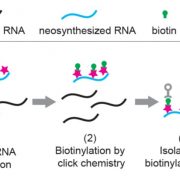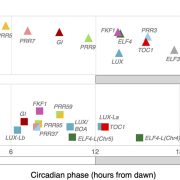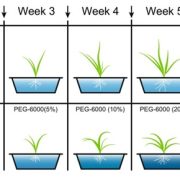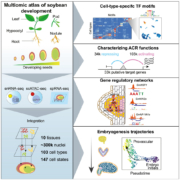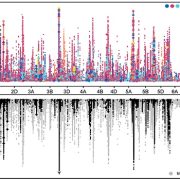Misexpression of a MADS-box gene results in longer glumes and grains in wheat
By Cristobal Uauy and Nikolai M Adamski
John Innes Centre, Norwich NR4 7UH, United Kingdom
Background: Wheat, in its multiple forms (bread, pasta, biscuits, among others) is a vital energy and protein source for humans. Every day, each person on the planet eats the grains of the equivalent of 50 wheat plants. With a growing demand for wheat, and against the backdrop of climate change, it is urgent that we increase wheat production sustainably. As part of this effort, understanding the genetic control of grain size and weight is extremely relevant to deliver genetic solutions to improve productivity in farmers’ fields. Each individual wheat grain is nestled within the glumes and leaf-like organs called lemma and palea. These floral organs affect the grain’s final size, shape, and weight. Some wheat types, called Polish wheat, have very long glumes, lemmas, and grains, all of which are controlled by a single gene.
Question: We wanted to identify the gene responsible for the long glumes and grains in Polish wheat. Although first described by the famous botanist Linnaeus in 1762, the identity of the gene remained elusive until now.
Findings: We identified the MADS-box transcription factor VRT-A2 as the gene responsible for the long glumes and grains in Polish wheat. A sequence rearrangement in the first intron results in the misexpression of VRT-A2 in different tissues and growth stages of wheat. This misexpression is responsible for the longer grains and floral organs found in Polish wheat. Introduction of the Polish wheat version of VRT-A2 into bread wheat increased grain weight and size, but not yield in UK environments. We also show a strong positive correlation between VRT-A2 expression levels and the magnitude of the increases in grain length and floral organ size. These results highlight how changes in expression of transcription factors can impact on important agronomic traits for major crops such as wheat.
Next steps: We want to understand how the VRT-A2 expression pattern is controlled by the sequence rearrangement in the first intron of the gene. We also aim to identify the downstream genes that are affected by VRT-A2 misexpression. Our goal is to use this knowledge to help deliver genetic solutions to improve wheat productivity in farmers’ fields.
Nikolai M Adamski, James Simmonds, Jemima F Brinton, Anna E Backhaus, Yi Chen, Mark Smedley, Sadiye Hayta, Tobin Florio, Pamela Crane, Peter Scott, Alice Pieri, Olyvia Hall, J Elaine Barclay, Myles Clayton, John H Doonan, Candida Nibau, Cristobal Uauy (2021) Ectopic Expression of Triticum polonicum VRT-A2 Underlies Elongated Glumes and Grains in Hexaploid Wheat in a Dosage-Dependent Manner. Plant Cell. https://doi.org/10.1093/plcell/koab119



